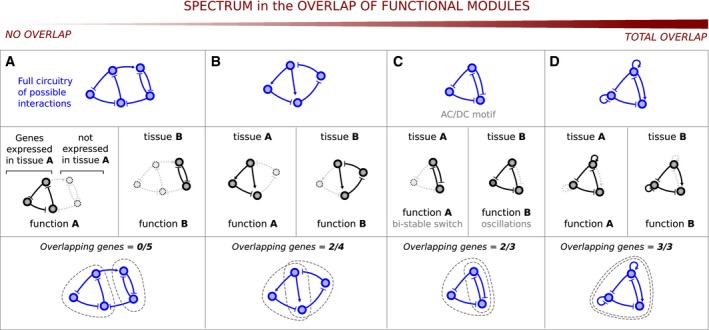Partial module overlap (Panovska‐Griffiths
et al,
2013; Sorrells
et al,
2015). The AC/DC circuit is able to alternate between distinct behaviors upon a change in the strength of its gene interactions. This circuit is formed by the superimposition of two distinct modules, a mutual inhibition motif and a repressilator motif, that combine under the same topology. As the strength of specific repressive interactions is adjusted, the AC/DC circuit switches between two distinct dynamical behaviors, that is, a bistable switch or oscillatory behavior, using the mutual inhibition and repressilator circuits, respectively.

